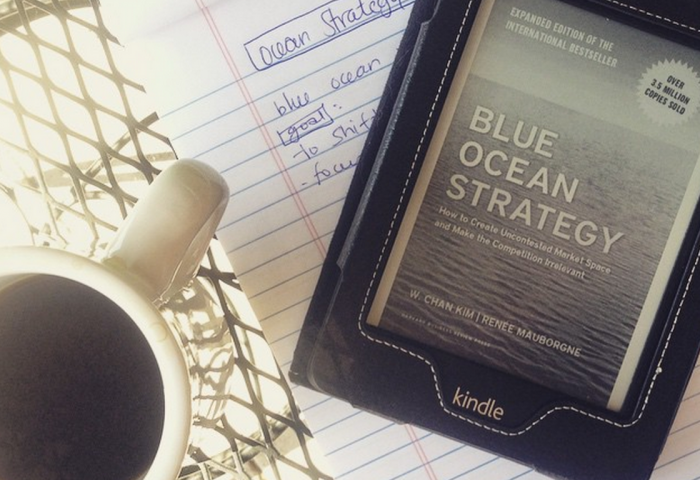If remote working had been my goal from the outset, law practice would have seemed an unlikely career option.
Attorneys are largely bound to representing clients within the states in which they are licensed, hindering mobility within the U.S.
Litigators and other specialized roles tend to be even more restrictive — the attorney’s presence in the courtroom is required.
I first recognized the ability to work remotely as an invaluable asset while in law school. One-hundred percent of my class owned a laptop, the iPad had been released, yet we were required to study from a half-dozen 2000-page textbooks every day. Combined with supplemental study materials, I had over 15 books during any given term. When I wanted to travel mid-semester to see my girlfriend that lived in San Francisco or to a law conference, I could usually only bring one or two books along (despite having homework due in every subject). Almost every other professional education system had digital books, and as per usual, law was the last to change.
The frustration around this inspired me to cut the hardcover bindings on my books, and run the now-loose pages through a double-side sheet-fed scanner. This produced beautiful PDF files that I could now load onto a tablet, or even read on my laptop. Finishing my homework while traveling was now possible.
I loved the feeling of being “untethered” and widening the experiential possibilities, all while working towards my goal. From there, my next goal became to create a system where I could work remotely while practicing law.
We live in an age where startups and developers are constantly coming out with amazing software tools for virtually any needs a business might have. However, when it comes to software for lawyers, it is invariably 5-10 years behind the times upon its release. The legal profession embraces tradition over innovation, and “remote working” is not quite in its mainstream vocabulary yet (i.e. transitioning to a “paperless office” is still a hot topic across the board).

In an effort to work remotely as a purely transactional lawyer (no court / in-person appearances required), I have found several tools that help get the job done outside of the office.
Phone
One traditional aspect of a law office has remained constant — answering and making phone calls. For most remote workers, having a landline is out of the question, and a second cell phone is a costly consideration. Since 2009, Google Voice has offered a completely free VOIP service, which provides you a number in almost any US area code you wish. This allows me to have a local business-specific number in my state. Perhaps even more importantly, I have been able to place wifi phone calls in foreign countries (or even on flights if I have the nerve), over wifi, that originate from my business number.
Onboarding Process
Collecting information about a prospective client is an essential first step to integrate their case into the workflow. When working remotely, it is impractical to have a 30-minute phone call simply to collect general information such as name, address, etc. For that reason, Jotform has become my client-onboarding hero. Through Jotform, I am able to email a prospective client’s a link to my custom online form, which requests the information I need. As a bonus, Jotform has a rich-content HTML field, in which I include my Attorney-Client engagement letter to be signed via click-wrap.
Signing Documents
When drafting contracts or other documents, the final step is often to have them signed. Docusign has proven to be perfect for this. First, it is an easy, intuitive technology that works directly in the web browser. I prepare fields for the signatures, and the recipient simply has to click to sign. Second, Docusign has security features such as collecting the IP address of the signer and MAC address of the machine the document was signed on. This way, if a question ever comes up, I have specific details of how the document was signed. Once documents are signed, everyone involved in the process instantly receives a PDF copy via email.
Delayed Email, Faxes and Time Zones
Despite the many emerging options for email, I remain enthusiastic about Gmail (through Google Apps) due to the variety of great plug-ins. My favorite plug-in is Boomerang, which delays emails from being sent until a time of your choosing. When in a different time-zone (or at home, sending email to another region or country), I am able to send emails that arrive at a reasonable hour for the recipient.
In some cases, I need to ensure that the email reaches the recipient within a certain window of time. For example, the quickest method to incorporate in Delaware is by faxing the charter documents. The fax machines in the Delaware Division of Corporations are only open from 8am-5pm EST, on weekdays. In Southeast Asia, that can be the middle of the night.
Using Hellofax (which facilitates online faxing via email), and Boomerang (to delay the email from being sent until the Delaware office is open), I can maintain a normal sleep schedule, as well as check this task off my list before the fax is even sent.
Zapier
Zapier is by far and large the central nervous system of my practice-management setup. Through Zapier, I am able to link insular data from one cloud service to another. For example, When a client completes my intake through Jotform, the following automation takes place:
- A file folder is created in Google Docs.
- A Trello card is created for the matter.
- A project is created in Freshbooks.
- A Toggl (service for timekeeping) project is created (which links directly with Freshbooks).
- Data from the Jotform intake is organized in a central Google Sheet.
Because of a tool like Zapier, I don’t have to rely on traditional methods of managing my practice. The combination of actions listed above would easily take myself or an office assistant over an hour to do.
With these tools, I have been able to maintain a law office in both Portland and New York — constantly working remotely from one or the other. Additionally, it has been possible to travel abroad for extended time while keeping up on client work. Hopefully the legal profession as a whole will view these modern tools as not only a means to escape from the office, but as ways to optimize practice management and enhance value to clients.




Responses
Awesome Jason.
That’s a cool list of useful apps, Jason. I’m a travel junkie myself; being a founder, cannot afford to remain off the grid, these tools certainly come in handy.
We run a collaboration tool ourselves, do check out http://grexit.com when you have a minute. GrexIt lets you share your Gmail labels, and writes shared notes on emails. Its an awesome way to assign tasks from email, and delegate sales leads and customer support queries to your team, even while you’re on the move!
Thank you for your comment Niraj!
You should check out HelloSign if you like HelloFax!
Thanks!
Yes, Hellosign is a great alternative to Docusign!